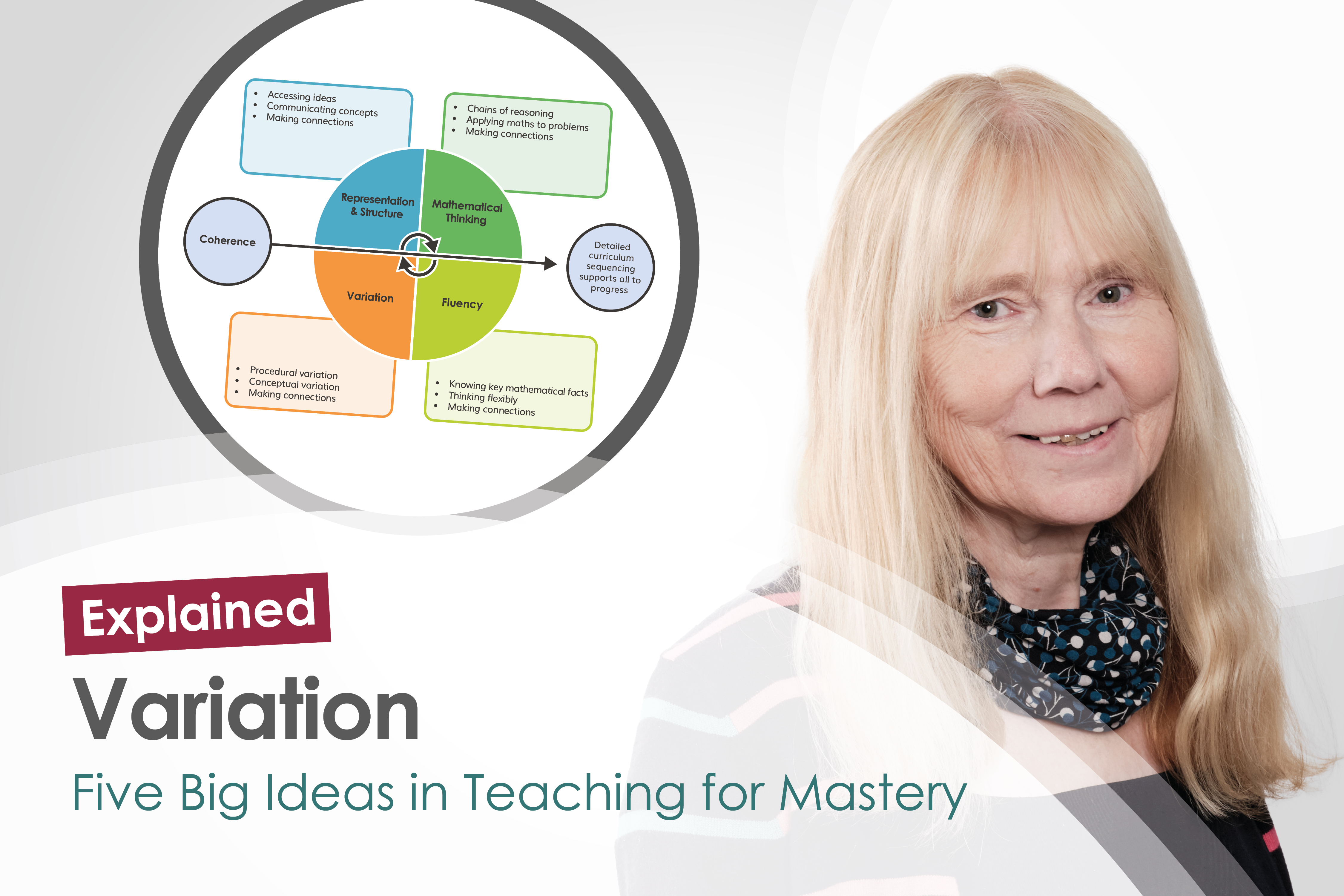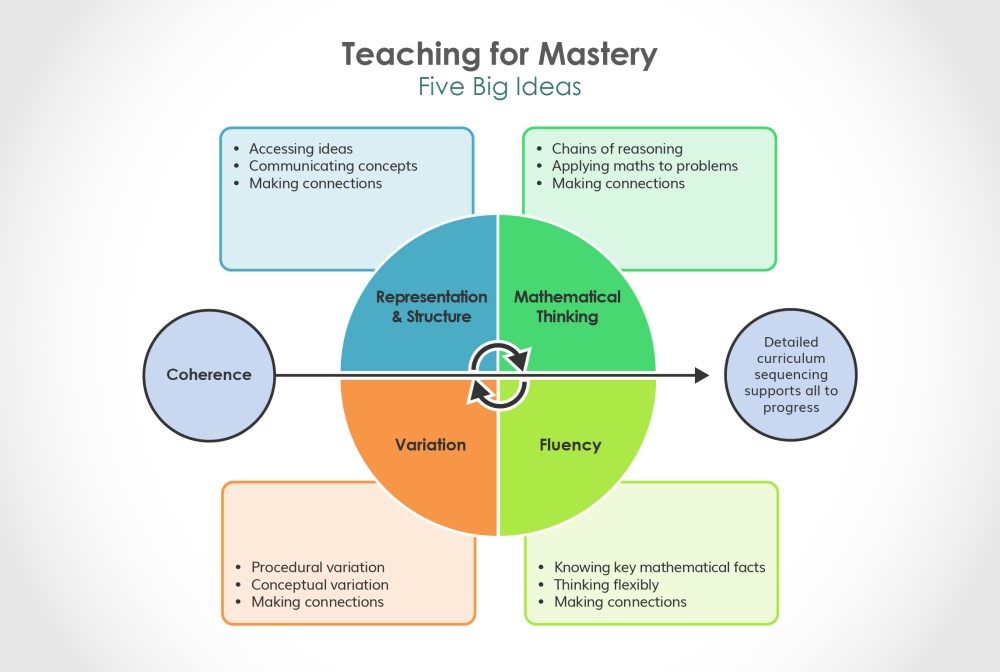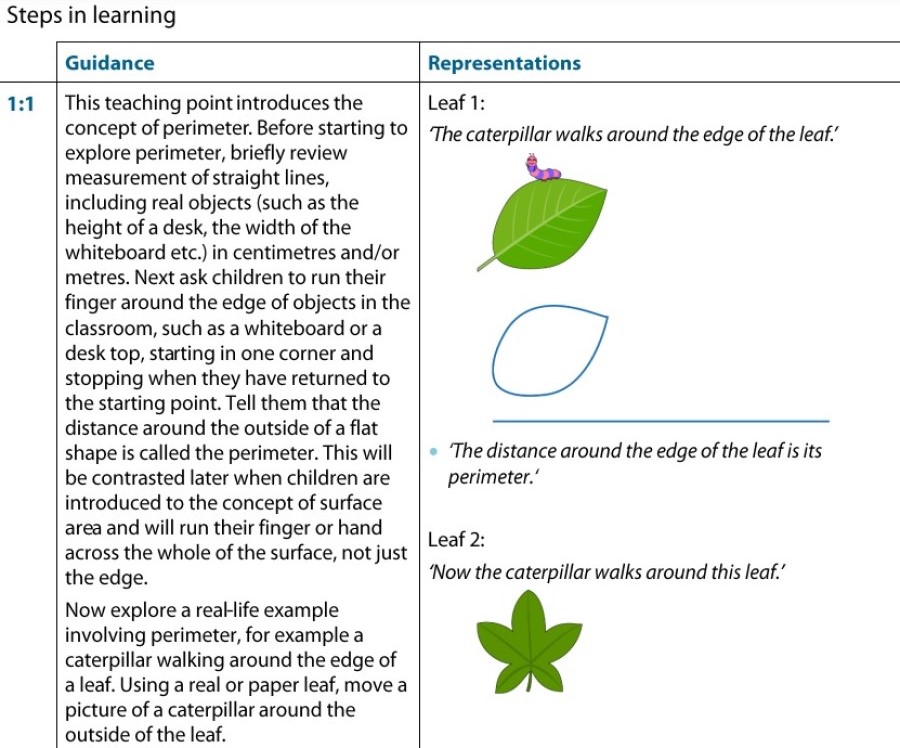The Five Big Ideas at Primary – Variation
Variation can be used to support pupils to develop a deep understanding of the maths they are learning
23/01/2024

In this Q&A, Dr Debbie Morgan, the NCETM’s Director for Primary, explains why variation is one of the most powerful ideas in the teaching of maths. She talks us through the positive impact it can have on pupils’ understanding and gives teachers her top tips for using it. Find out more about the Five Big Ideas in Teaching for Mastery.
What is Variation?
Variation influences the way children think about maths by drawing attention to essential structures and relationships within a concept. It is characterised by a carefully constructed small-step journey through learning, where consideration is given to what is kept the same and what changes.
Variation includes consideration of not only what the concept is, but what it is not. This contrast deepens learning. The teacher in this video clip from a Mastering Number session with a Reception class encourages children to reason about what is six and what is not six, alongside questions such as ‘how did you know?'
How does variation fit into the Five Big Ideas?
The Five Big Ideas that underpin teaching for mastery are all interconnected. Variation involves looking at a concept through different representations, starting with one and then adding more to consider the concept from different perspectives. Concepts are presented coherently to engage pupils in mathematical thinking, to reason and make connections. Choosing calculations that pupils are already fluent in reduces overload and learning is made accessible to all pupils.
‘What we want is to get all children on the bus. Through teaching in small steps and building concepts with depth and rigour, we make learning accessible so that all pupils stay on the bus.’
– Dr Debbie Morgan
What is the positive impact of using variation?
The benefit of using variation is enormous: you can improve the progress that children make and the quality of learning. Ensuring depth of understanding and making lessons accessible to all children means that more pupils make good progress and become confident mathematicians. Using variation relieves cognitive load, so children have space to make deep and lasting connections.
Are there any challenges to be aware of when implementing variation, and what tips can you give teachers?
Lesson design
Knowing how to design a lesson that builds a concept with accessibility at the beginning, and the right amount of detail throughout, is not an easy process. If you suddenly lose half your class part way through a lesson, it's probably because the step you took was too large. The challenge then is ‘how do I bridge the gap between where they were secure and where I lost them?’. When designing lessons, it's worth taking those couple of steps back, because if you can get children on the bus and – through keeping your steps small – you keep children on the bus, they have greater potential for success. Teachers coming together to plan collaboratively is a great mechanism to improve application of variation and the quality of teaching, and that is happening across the country through the Maths Hubs Network.
High-quality materials
Accessing high-quality materials which exemplify variation is crucial – teachers cannot be expected to invent all of this themselves! The NCETM Professional Development (PD) materials and the Curriculum Prioritisation materials, (which incorporate the PD materials) are designed for primary teachers and include variation throughout.
It’s important to familiarise yourself with where the variation features within the materials, so that you can ask questions to draw it out in lessons. It lies within; the small step sequencing, considering what is kept the same and what changes, the careful choice of representations, the examples of practice exercises, and the stem sentences and generalisations which are presented in bold.
Pace and coverage
There can be a perception that the pace is too slow for some pupils, but in fact, it benefits all children to spend time on the detail of a concept. In doing so, we don't risk gaps appearing in learning, even for our higher-attaining children.
An example of this is seen in the Year 4 PD materials, when perimeter is introduced to pupils through a real-life experience:
Teachers may feel pressured to cover the curriculum, but starting two steps back and breaking learning down will take more curriculum time. What I would say to that is, if we teach something well the first time, less re-teaching is needed in the future.
Summary
Variation has the potential to make a difference and close the attainment gap. It can be thought of as the magic within the teaching – the thing that makes the learning accessible for all. You might just start with something small, such as introducing non-concepts, or starting two steps back when you begin to teach, but it's well worth the investment because it can make an enormous difference to all children's progress and confidence as they develop as mathematicians.
Now watch the explainer video which summarises Debbie's top tips for using variation:
Did you enjoy this?
Read our other Five Big Ideas features:
Keen to apply these ideas in your school?
Your local Maths Hub can support you with fully-funded CPD to embed and sustain the Five Big Ideas in Teaching for Mastery across your school.
Connect
